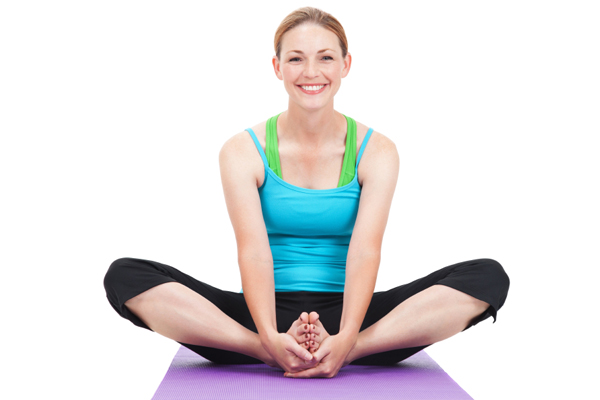You can’t find a hair tie, your yoga mat is packed away in a box somewhere, and dinner has to be on the table in 45 minutes. Don’t have time for yoga? Yeah, me neither. Thankfully, though, our resident yoga expert Jill Lawson has provided a few tips and tricks for those of us “lazy girls” who want to practice yoga more regularly but sometimes lack the time, resources and know-how to do so.
What would an at-home routine look like for someone who can’t afford to join a yoga studio?
Just as it is in a yoga studio, the environment is an important part of the at-home yoga experience. Light up some incense or candles, play some soothing music, and turn up the thermostat just a bit. Setting the mood and creating an environment as peaceful as the yoga studio can be just as profound when practicing yoga at home. Always begin with a warm-up of some sort. For more vigorous practices, 5-10 rounds of sun salutations will get the blood flowing. For more gentle practices, a few rounds of cat-cow pose will suffice. The bulk of the practice can take many forms, but each session should still end with a few minutes of final relaxation, otherwise known as savasana, or corpse pose.
What supplies do you need?
Rodney Yee said, “The only pieces of equipment you need to practice yoga are your mind and your body.” However, a yoga mat is an added comfort that people may not want to skimp on, as it provides a sound base of support for the practice. Audio yoga podcasts can also be helpful, as having a little guidance can keep people from getting distracted.
What poses should you do?
There are no right or wrong poses to do for a home practice. I find it helpful to choose a series of poses before beginning a home practice versus just jumping on the mat and improvising. To maintain balance and symmetry, mix standing poses such as warrior I and II, with twists such as revolved chair pose, backbends such as cobra, and hip openers such as pigeon pose. Make sure the series begins with a proper warm up, and always ends with savasana.
How often do you need to switch up your routine?
A lot of traditional yoga styles stick to one routine, so it wouldn’t be a crime to follow the same sequence for each home practice. This can help those who may be indecisive or need some kind of structure to get motivated.
What is the ideal length of time to practice daily, or otherwise?
If time permits, an hour would be ideal. But if that is not an option, plan on scheduling at least 30 minutes, allowing time for a proper warm up and savasana.
Also Read:
4 Ways to Avoid Yoga-Induced Injuries

